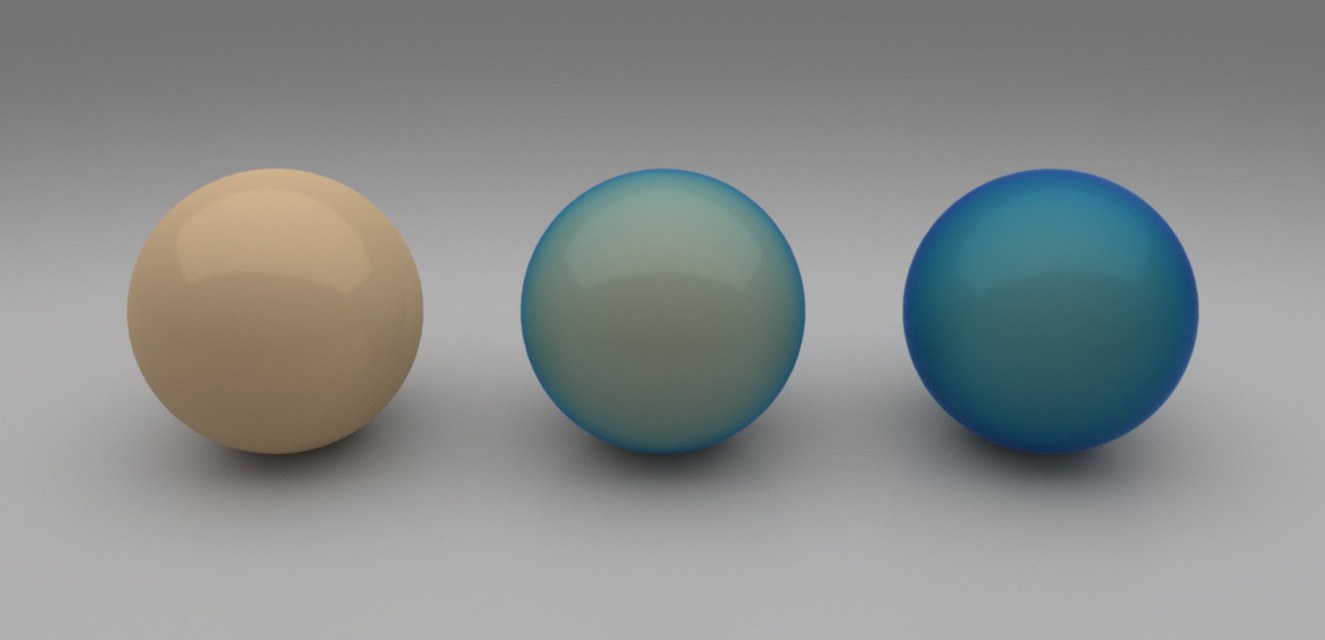Coating
 A material can be covered with an additional layer that has its own color and reflective behavior. The color will automatically be adapted to the simulated thickness of this layer. In this example, the settings are identical but with increasing Thickness settings for Coating.
A material can be covered with an additional layer that has its own color and reflective behavior. The color will automatically be adapted to the simulated thickness of this layer. In this example, the settings are identical but with increasing Thickness settings for Coating.These settings can be used to add shine or lacquer layers to a material.
This setting can be used to define the color of the additional reflection layer.
Since the optional layer of the material is always transparent, this menu offers the common settings for various dielectric materials. A Refraction Strength can also be defined manually.
This is the Refraction Strength for the optional material layer.
This setting defines the intensity of the layer.
This value defines the roughness and therewith the scattering of the layer. Reflections will be blurred correspondingly with increasing Roughness values.
This setting defines the simulated thickness of the layer. The translucency diminishes correspondingly with increasing values.
This color works like an absorption color, i.e., the layer will be colored in accordance with its thickness and the defined Refraction Strength.
Bump Strength [-2147483648..2147483647%]
The layer can react to existing bump or Normal maps affecting the surface or use its own bump or Normal map. The Bump Strength defines the effect of the bump on the layer in either case.
If the layer should also be affected by a bump or Normal map, the source of the bump can be defined here:
- Base Surface: Uses the existing settings of the bump or Normal maps assigned to the base surface.
- Bump: Makes a Bump Map input available to which a custom bump map can be assigned for the layer.
- Normal: Makes a Normal Map input available to which a custom Normal map can be assigned for the layer.
Here you can assign a bump map to the layer if Bump Mode is set to Bump.
Here you can assign a Normal map to the layer if Bump Mode is set to Normal.
These options are only available if Bump Mode is set to Normal. Since the supplementation of Normal textures is not standardized, different variations of color combinations can be made to describe the surface Normals using the color components red, green and blue. These options help in such cases to correct the evaluation of colors in the loaded Normal texture, if necessary. Flip X inverts the X direction of the Normals that is read out. Flip Y inverts the Y direction of the Normals. Swap Y and Z swaps the blue and green color components of the loaded Normal map.